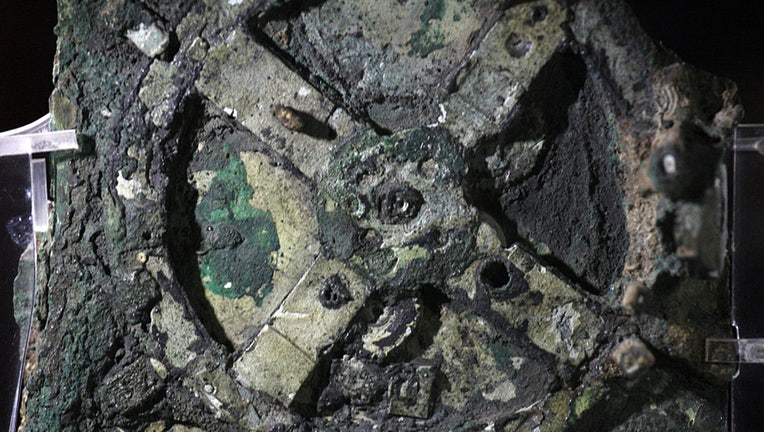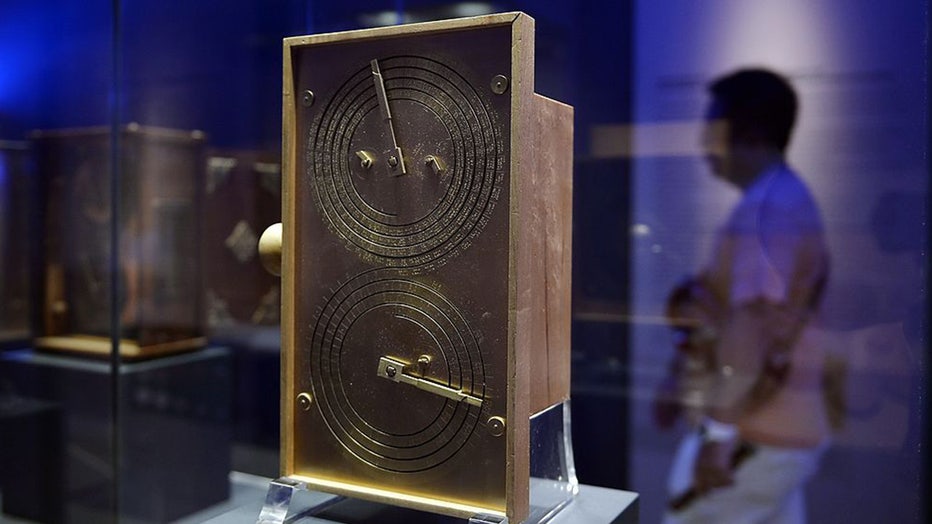YouTuber's data help researchers shed new light on 2,000-year-old computer

FILE - The Antikythera mechanism, 205 BC. Found in the collection of National Archaeological Museum, Athens. (Fine Art Images/Heritage Images/Getty Images)
Astronomers at the University of Glasgow have offered new insights into both the craftsmanship and how a 2,000-year-old computer was used during the time of the ancient Greeks, and it’s all thanks to a YouTuber.
"It’s given me a new appreciation for the Antikythera mechanism and the work and care that Greek craftspeople put into making it," said Dr Joseph Bayley, from the University of Glasgow’s Institute for Gravitational Research and co-author of the study.
What is the Antikythera mechanism?

FILE - A visitor walks past a reconstruction of the the so-called Antikythera Mechanism, a 2nd-century BC device known as the world's oldest computer, which was discovered by sponge divers in 1900 off a remote Greek island in the Aegean, at the Archa (LOUISA GOULIAMAKI/AFP via Getty Images)
Discovered in a shipwreck off the coast of Antikythera, which is between Crete and Greece, more than a century ago, the Antikythera mechanism is the most technologically complex object ever found from the ancient world, according to Scientific American.
Scientists believe it dates back to the second century BCE.
The Antikythera mechanism was originally believed to be a mechanical clock.
However, upon further inspection, researchers were able to conclude that it was actually a type of astronomical computer or planetarium.
The accuracy of the device was unparalleled by any other known contemporary device.
YouTuber's data inspired the study
Only fragments of the computer exist and so far, scientists have theorized that the mechanism was a hand-operated computer, designed to predict eclipses and calculate the astronomical positions of the planets on any given date.
A calendar ring sat atop another section of the device which had several hundred holes and scientists believe those holes indicate the days of the year.
Since scientists don’t have the entire computer, it was originally thought that it followed the Egyptian calendar (365 days) and thus it was theorized that there were 365 holes beneath the calendar ring.
However, after getting inspiration from YouTuber Chris Budiselic, who was attempting to make a replica of the device, scientists now say that there may have actually been 354 holes, which corresponds with the Greek lunar calendar.
Researchers used the measurements made by Budiselic and input them into their analyses.
And while there were previous studies suggesting that the Antikythera mechanism followed the lunar calendar, this new theory has increased the likelihood that this was the case, researchers said.
"It’s a neat symmetry that we’ve adapted techniques we use to study the universe today to understand more about a mechanism that helped people keep track of the heavens nearly two millennia ago. We hope that our findings about the Antikythera mechanism, although less supernaturally spectacular than those made by Indiana Jones, will help deepen our understanding of how this remarkable device was made and used by the Greeks," Prof. Graham Woan said.
This story was reported from Los Angeles.

